|
| Ankur, 2011 |
 |
|
Editorial | Sandip Das and Suvarthi Das
Welcome Message | Samir Raychoudhury
|
Short Story
Aronye Ekratri (Bengali) | Rimi Pati |
Article
Bari Theke Bari (Bengali) | Julia Majumdar Bose
Sree Sree Durga | Arpon Das (Age: 10 years)
Pujar Achaare Natokiyotar Sondhaane: Sonkhipto Itikotha | Subarna Gupta
Our Festival, Our Films | Arnab Bose
Hinduism, Worship of Idol and Durga Puja: A Perspective | Prasun Kanti Majumdar
Happiness and Hinduism | Kedar Das
Flu Shots | Prabir Saha
Stroke among Indians in the U.S. | Nandini Sen and Souvik Sen |
Poem
Father’s Day | Barsha Ray (14 years)
The Partition of Summer Vacation | Sunny Gupta (12 years)
Kono Ek G(n)aa er Kotha | Rimi Pati
Lukochuri (Rabindranath Thakur) | Translated by: Indrani Nandy (Chapel Hill, NC)
My Morning inside Lake Murray | Palash Das
Friendship | Pritish Das (9 years)
Jalojo (Bengali) | Subharthi Das
|
Recipe
Making Naru for Durga Puja – The Tradition Continues | Archana Guha-Mandal
Begun Shorshe (Bengali) | Monalisa Saha
Recipe for Jalapeno Cumin Bread | Monika Gupta
Recipe for Misti Doi | Treena S. Basu
Paneer Pasand (Bengali) | Anasua Mukherjee
|
| Quiz Corner | Julia Majumdar Bose and Sandip Das |
Art and Photograph
Puja Ghot | Arav Rastogi (5 years)
Maa Durga | Vishal Saha (11 years)
A still from the movie ‘Charulata’ | Sandip Das
Fish Market | Sparsho De (8 years)
Hope | Subhajit Ghoshal
My Furry Friends | Ayan Dasgupta
Victoria | Himadri Dasgupta
|
|
Editorial
Sandip Das & Suvarthi Das |
This year is very special. We have Durga pratima among us and she has travelled overseas all the way from Kolkata, India to Columbia to bestow all her blessings upon us. The formal celebration is scheduled only for 2 days, October 1st and 2nd. But, it is not just a 2 day event. For last few months we have been preparing for the Puja; conducting regular weekend meetings and rigorous rehearsals for cultural programs; working overnight to shape our dreams into reality… we are into it for a long time… it has become an yearly event of our life in Columbia.
A magazine like this is not just an ensemble of colorful papers; it has got our hearts into it. It is a unique place to share your creative work, a platform that we want to offer to our |
younger generation and build up an environment to cultivate the Bengali culture and literature, and at the same time provide a space to cherish and nourish their childhood talents.
This is the first volume of our ‘Ankur’ Sharadiyo magazine and we have tried our best. But, it’s not only us who made it possible; we are immensely thankful and proud of everyone who has contributed to this magazine. We would also like to thank all sponsors for their financial support and all the help they have extended toward the publication of this magazine.
On behalf of the publication team, we wish you all a joyful Durga Puja and a happier, healthier, prosperous life ahead. |
| Namaskar. On behalf of the ‘Bengali Association of Greater Columbia, South Carolina’, we cordially welcome every attendee of Durga Puja 2011. This is the second year of our Durga Puja celebration in Columbia. We firmly believe that as we grow bigger as a community in the years to come, we will celebrate this auspicious occasion with more vigor and joy, exuding happiness and prosperity and strengthening the bonds between us. Our entire publication team is extremely excited and proud to present the 1st volume of our Sharadiyo Durgapuja Magazine “Ankur”. |
|
|
 |
Dear Community members and Friends,
Namaskar.
Fall is here and we are ready to welcome Ma Durga to Columbia, South Carolina. This year Devi Pratima arrived amidst us from Kumortooli, Kolkata, India. Of course, it is quite an achievement for us as a community. This is only our second year of hosting Durga Pujo in Columbia. As we worship Devi Mahamaya, we pray to her not only for peace and happiness of our family and friends, but also to end violence in the |
world. It is important that we stand together as a community to help and support each other.
Through our activities we hope to inspire the new generation to preserve our culture and heritage. We are celebrating Durga Pujo in a traditional way, with a variety of entertainment, food and cultural events. All community members have come together to make this auspicious occasion a grand success.
On behalf of Ankur, I would like to welcome |
all of you to our Durga Pujo festival. I would personally like to thank the sponsors, donors and volunteers for their contribution to this occasion. I encourage everyone interested in Bengali culture, literature and tradition to join Ankur and strengthen our community. Your support will help Ankur to grow and blossom in future.
Please come and join us to offer our prayers to Ma. May peace be with us always and may the grace of Ma Durga shine upon us. |
|
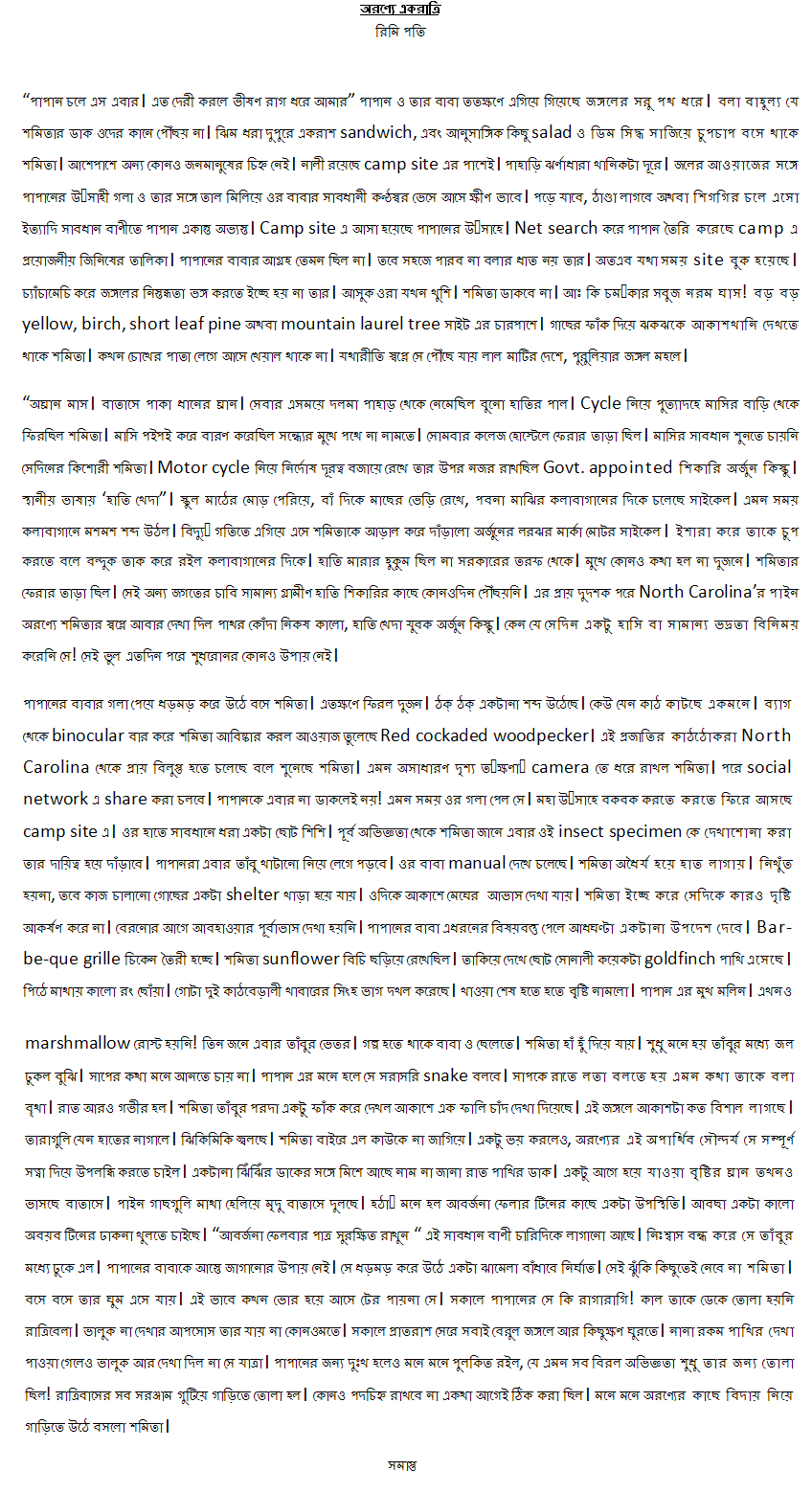 |
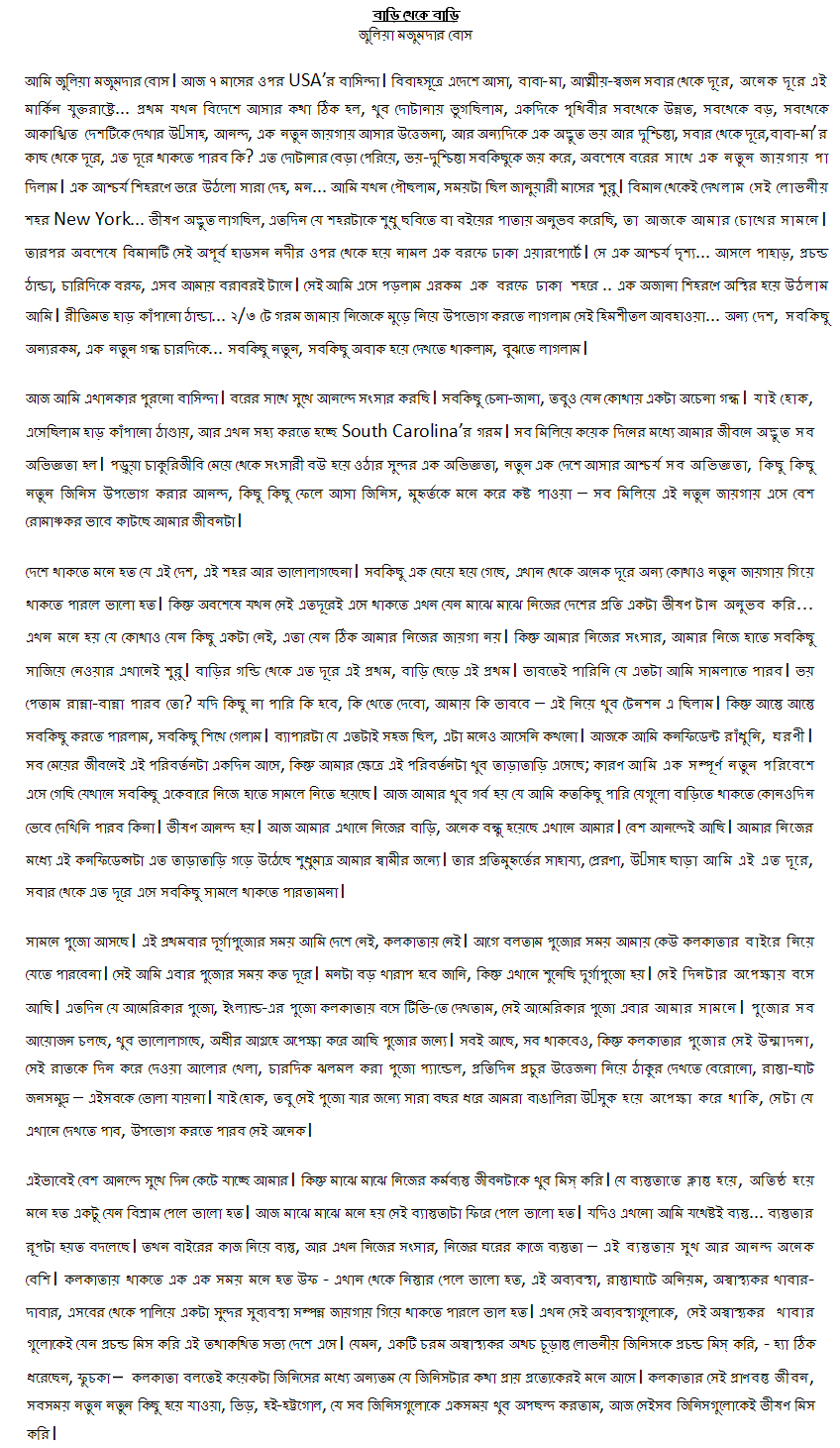 |
| |
Sree Sree Durga
Arpon Das (Age: 10 years) |
Mahishasura and all his commanders. For this reason Durga is the symbol of divine forces—divine mother.
The word Durga came from the language Sanskrit. It means unbeatable. The syllable “du” means sufferings, and evil habits. The “r” refers to diseases and the “ga” is the destroyer of sins, injustice, irreligion and laziness.
Ma Durga has ten arms, and each arm represents one of Her power. Her ‘vahana’ |
is Lion. It indicates that She has unlimited power to destroy evil forces.
She visits the earth and stays here every year from the sixth to tenth day of the waxing-moon fortnight in the month of Aashwin. That time we celebrate Durga Puja. The most important day is the 10th day, and it is also the 10th day of victory of the battle against Mahishasura. |
Ma Durga is the mother of the universe. She protects us from evil forces. She always likes good people. She also likes children. She hates and destroys bad forces. She blesses us so that we can fight against injustice.
First the Goddess Durga appeared in the universe to protect all the gods from the powerful demon Mahishasura. She killed |
|
|
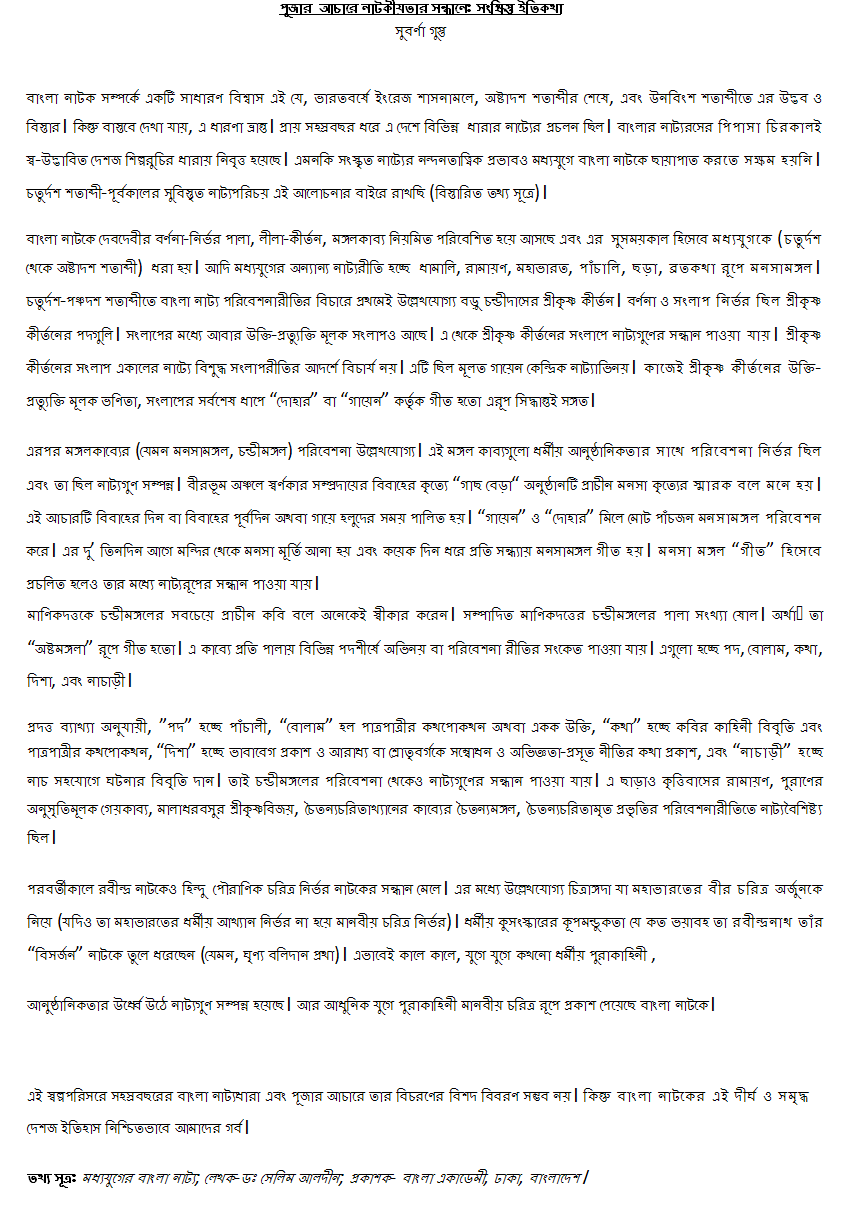 |
| |
Our Festival, Our Films
Arnab Bose |
|
|
“Shob shotti! Mahishashur shotti, Hanuman shotti, Captain Spark shotti, ………….”, declares Ruku, very early in the classic “Joy Baba Felunath”, and we ask ourselves – Is it just this belief, or something more, which prompts a whole community to celebrate its grandest and most eagerly awaited festival of the year – our very own Durga Puja. The five day extravaganza finds its reference in almost every sphere and artform associated with our culture, may it be special editions of popular magazines and music, literature or films. Every master in their works, consciously or otherwise, has succumbed to its impact.
In celluloid, likewise, numerous direct or intertwined instances can be sighted; the obvious first name that comes up is the auteur himself, Satyajit Ray. In his very first flick, the classic “Pather Panchali”, we see how Apu and Durga, between the meagre moments making up their life, look forward to ‘Durga Pujo’. Ray’s lyrically poignant and real depiction of rural Bengal, doing justice to the Bibhutibhushan novel, has celebration and allegory running throughout the film; especially, the heart rending scene after Durga’s death, when Harihar comes home with a new ‘pujor sharee’ for her and Sarbajaya breaks down into tears clinging on to the fabric.
Ray refers to the goddess again in the form of Kali in “Devi”, his stark depiction of the religious superstition that still runs as an undercurrent in certain strata of our society. Driven by a dream, Kalikinkar deifies his daughter-in-law, Doyamoyee, addressing her as ‘Maa’. And what follows is a painful illustration of blind faith overreaching itself, ultimately taking the toll on Doyamoyee, as she becomes mentally shattered and is driven to madness.
Though, seemingly not as intrinsic as the |
previous two, yet the goddess and her celebration finds mention again, in his “Nayak”, in a pivotal and crafty flashback sequence. Arindam reminisces the untimely demise of Shankarda, his friend philosopher and guide, succumbing to a cardiac arrest during the ‘bhashan’ of Maa Durga, trying to lift the deity; this being the incident prompting Arindam to try his luck into film acting, from which he was restrained till then, by Shankarda, who condemned film actors as merely puppets. Ray optimistically uses the premise of the Puja to show how the departure of an individual marks the arrival of prospects for the other, and how this one decision leads Arindam gradually to fame and wealth.
Setting aside Ray momentarily; next, we stumble upon Uttam Kumar’s “Anthony Firingi”, where we see towards the end, a group of religious bigots set the christian Anthony’s house on fire, when he tries to organize the puja; a symbol of the religious dogmatism we still suffer from.
Uttam Kumar’s “Nishipadma” too, refers to the festival when in the final phase of the film, Bhuto takes Pushpo to his house, giving her the respect of a mother, on the day of the homecoming of the goddess – the analogy is so apt, so soul-stirring.
Coming back to the master again, Ray’s timeless ‘Feluda’ classic, “Joy Baba Felunath” revolves around the theft of a prized idol of ‘Ganesha’ and how the grandfather-grandson duo plot to hide the fake idol inside the mouth of the lion – Durga’s ‘baahon’, prior to the festival. Ray’s brilliant treatment of his own story, coupled with fantastic photographic images takes us to a nostalgic world of innocence, and the beauty and celebration of the Puja in Benaras – Bengali’s second home. At the |
end, Feluda’s ‘mogojastro’ sees through it all.
In more recent times, we find the most thematic and direct reference of the puja in “Utsab”, where Rituparno Ghosh weaves the story of the reunion of a family celebrating the festival in their ancestral home. Ghosh nicely shows how the fragmentation of the joint family has broken people up into private spheres of isolation, briefly intruded into, during the festival days. The theme of the festival is used as a fulcrum on which the film hangs, with occasional references to the age-old customs related to the puja, like, the ‘ekchaala protima’ signifying the Bengali joint family and how the red-bordered white saree seems to have become the uniform of the married women during ‘Debi-boron’, the day Maa Durga departs.
In a diametrically opposite treatment, Ghosh revisits the premise of the puja again, in his much criticized “Antarmahal”, where he uses the goddess to portray the sensuality of the female form. Through the main plot, set in a ‘zamindar bari’ in 19th century Bengal and its various sub-plots, we see the events from the sculptor’s point of view, as he gives shape to the clay idol of the goddess; and how his tribute, his masterpiece seals the fate of the ‘zamindar’ family.
Such a discussion can never end, such examples can never end; it never does. As time moves on, the goddess and her celebration will continue to inspire and influence many in their creations, in their films. And whenever we, the typical ‘Bengali’ with our ‘baaro maashey tyaro paarbon’, will try to find the reason what to celebrate in the month of Autumn, Devi Durga will exclaim in true Arindam Mukherjee style, – “ Ami to achi. Isn’t that enough!” |
|
|
Hinduism, Worship of Idol and Durga Puja: A Perspective
Prasun Kanti Majumdar |
About God and Goddess: God is depicted as “It is this unseen Power which makes Itself felt and yet defies all proof, because It is so unlike all that I perceive through my senses” by Mahatma Gandhi in his poem ”The Meaning of God”. Worship of God and Goddess (emblem of mythological power of God) is one of the ancient cultures in the history of mankind and also reflective of the profound philosophy of “Sanatan Dharma” (commonly known as Hindu religion), which is often misinterpreted or less understood by many of us in the context of materialistic civilization.
Essence of Hinduism: It would be quite useful to get registered with the fact that Hinduism is quite different from the usual definitions of religion and hence asks for a complete paradigm shift in terms of what is being looked for in a religion. Unless this mental preparation is done one is very likely to be bewildered and overwhelmed by the gigantic versatility of Hindu concepts. Many people get confused when they try to compare Hinduism with other religions. While most of other religions have "well defined" boundaries, the question one may have is why Hinduism is not like that. For example there would be one named God, one holy book, one founder, one set of rules, which the adherers must follow with fear of punishment otherwise, and Hinduism does not have these kinds of definitions [1]. |
Hinduism is the place which suits both the adventurous intellectual who wants to explore the essence and the real truth and the simple person who would be happy to follow a simplified set of procedure that would easily uplift him/her without jamming head with philosophies. It also allows the in-between person who wants to just make sure that what he/she gets is good but at the same time not getting caught in the complexity. It is a roaring gigantic waterfall that runs into streams and sub-streams that joins and finally into the ocean. The brave courageous thinkers could go to the trunk of the magnificent waterfall to explore and share the feeling with others, while the ones who do not want to get bewildered by that route could quench their thirst from one of the nice streams flowing from there and all in-between could go up to the point to satisfy themselves that the streams are from the same trunk and reaching the same ocean. In simple terms, you don’t have to follow or fear but make love with God. That does not mean that Hinduism does not have texts. In fact it has many.
Hindu scriptures/texts: In general, these may be classified into two divisions: Sruti scriptures and Smriti scriptures. Sruti include the divine hearings like Vedas (Rig, Yajur, Sama and Atharva) [3] and the Bhagavad Gita [4]. The Vedas (each with four parts Samhitas, Brahmanas, Aranyakas, and Upanishads) are the primary scriptures of Hinduism. |
All authoritative writings (to explain and elaborate the Vedas, making them understandable and more meaningful to the general people) outside the Vedas are collectively referred to as Smriti [2]. Smriti include the Dharma Shastras, Nibhandas, Puranas, The Epics, Agamas or Tantras, Darshanas and Vedangas (Upa Vedas). Uniqueness vs. Worship of Forms (God and Goddess) and Idols: We often encounter a few curious questions: Is “Ishwar” (God) the same creator as of other religious faiths? Absolutely yes; like every other religion, Hinduism clearly states that “Ishwar is one and second to none”. This preaches the true spirit of unity, harmony and devotion to only one creator through different paths. Why Hindus worship so many Goddesses and idols? It is to be understood that “Ishwar” (God), the eternal power, is unlimited and unimaginable in existence. For mass people Ishwar is only felt through creations and immense helplessness to the power of God. At the early stage of devotion, Hinduism preaches “Sakar Upasana” (worship through visualization of powers of God which popularly known as Goddess) to get a feel for the divine source of abstract spirits and at very advanced stage of devotion (very few scholars could get there), you may find yourself focused on one concentrated power which you can’t visualize but feel around you. I remember from my childhood reading: |
|
 |
Moreover, Idol worship is not just limited to a symbol or an attempt to visualize endless power, but far beyond this. In Hinduism, the devotees often “establish life on the Idol” and God is believed to be found there [5]. We are doing exactly this in Durga Puja.
Durga Puja: This greatest festival of Bangali is the worship of 'Shakti' or the divine power. We worship Durga as the mother goddess, the epitome of 'Shakti' (divine power), to |
deliver us from the evil and bring peace and prosperity in our lives [6]. But the most interesting mythological part of Durga Puja is that, instead of placing Durga on a high alter and worshipping her from a distance the Bangalis embrace her in their hearts and make her an inseparable member of the family. We welcome Durga to the earth as our daughter who comes at her parents' home for her annual visits. Durga stays for four days-Shashti, Saptami, |
Ashtami and Nabami along with her children, Ganesha, Laxmi, Kartik and Saraswati and sets for her husband's abode on Vijaya Dashami. Durga's mode of journey (an elephant, a horse, palanquin, and boat) to the earth is detailed in scriptures and all has consequences in our life. We have dual responsibility of devotee and practice the acquired divine lesson in life to progress towards “Moksha” (believed to be the ultimate goal). |
|
| Preparing for Devotional Lesson: Lord Krishna says: |
|
|
“Whatever happened, it happened for good. Whatever is happening is happening for good.
Whatever that will happen, it will be for good.
What have you lost for which you cry? What did you bring with you, which you have lost?
What did you produce, which has destroyed? You did not bring anything when you were born.
Whatever you have, you have received from Him. Whatever you will give, you will give to Him. |
You came empty handed and you will go the same way.
Whatever is yours today was somebody else’s yesterday and will be somebody else’s tomorrow.
Change is the law of the universe.”
|
Related resources:
[1] http://www.shaivam.org/hipspeci.htm
[2] http://www.hinduwisdom.info/
[3] http://www.sacred-texts.com/hin/
[4] http://www.bhagavad-gita.org/
[5] http://www.sanskrit.org/www/Hindu%20Primer/murtisthapana.html
[6] http://www.durga-puja.org/ |
|
Happiness and Hinduism
Kedar Das |
Philosophers and religious thinkers often define happiness in terms of living a good life or flourishing, rather than simply as an emotion. Happiness in this older sense was used to translate the Greek Eudemonia, and is still used in Virtue Ethics.
Economists suggest that the measures of public happiness should be used to supplement more traditional economic measures when evaluating the success of public policy. In the present world, different research groups have attempted to relate human happiness with different aspects of life; such as — individual income, employment, social relationship, children, education, social security, economic freedom, leisure etc.
Since way back many research groups and scientists, psychologists, economists, religious thinkers, philosophers have been trying to define happiness correlating many factors and aspects of human life. Many of them have invented some kind of matrices to measure happiness. However, there is no unanimous conclusion about the definition and measurement of happiness. Because it is very subjective in nature, so it is difficult to compare the happiness of one with that |
of another’s. Although exact comparison is not possible; however, it is true that happiness and its antonym sadness are different states of an individual mind. This mental state depends on some factors; such as — thinking, actions taken by individual, feelings, emotions etc. When somebody takes an action or does something and the outcome is not as per his/her expectation, his or her mental state cannot reach the state of happiness; rather it may become the cause of his/her sadness. This is why the Bhagwad Gita advised us not to think of the outcome of anything or any action, just do whatever we should do. Everyday we do a lot of things, but before doing anything we should meditate first, and if we think how the people around us will be affected by our action, then we will never feel sad in the long run. The
philosophy of Hinduism teaches us that ill-motivated and self-centered people are never contented and never happy. Only the philosophy of Hinduism believes in the peace of all living beings of the whole universe.
So, if we all follow the true philosophy of Hinduism, we will be able to live in our society in amity, and everybody will be happy. |
| What is happiness? What are the characteristics of happiness? What are the criteria to measure happiness? What is the way to attain it? Different people define it different ways. Since antiquity, people have been trying to define happiness from different approaches; such as — biological, psychological, religious, philosophical, economic etc. |
A group of people say that happiness is an emotional aspect. They define it as “Happiness is a mental state of well-being characterized by positive emotions ranging from contentment to intense joy”.
Psychologists attempt to apply the methodical approaches to answer questions about what "happiness" is, and how we might attain it. Psychologist Martin Seligman summarizes Positive Psychology's correlational findings. He emphasizes that humans seem happiest when they have —
• Pleasure (tasty food, warm bath, etc.)
• Engagement (or flow, the absorption of an enjoyed yet challenging activity),
• Relationships (social ties have turned out to be extremely reliable indicator of happiness),
• Meaning (a perceived quest or belonging to something bigger), and
• Accomplishments (having realized tangible goals). |
|
Flu Shots
Prabir Saha |
We all feel the nip in the air as the temperature drops; the leaves turn into shades of gold and red. If fall is here, can winter be far behind? Unfortunately, winter brings a familiar danger along with its frosty winds. The arrival of sniffles, coughs and fever heralds the beginning of yet another dreaded flu season. As a health care professional, I would urge you to protect yourself with the flu shot as soon as it becomes available in your community. It takes two weeks for the body to develop immunity. Influenza seasons are unpredictable and can begin as early as October. We have all heard about preventative flu shots but may not have paid close attention to the new CDC regulations and updates that can benefit everyone. Let us look at the following points:
• You do not need a doctor’s appointment to receive a flu shot if you are above 18.
• You do not need health insurance; you can directly go to the pharmacy and pay in cash. It typically ranges between $25-$30.
• A maximum of 20-30 minutes maximum time is required.
|
• Those with insurance will just need to pay the co-pay.
• S.C. Medicaid, HMO, United Health, Unison etc have now started covering the flu shot given in Pharmacy.
• Anybody who is 65 years or older with Medicare part B is entitled to flu shot.
• This year CDC came out with Fluzon HD i.e. high dose. This is a flu shot specially designed for people 65 years and older. But you will need to specifically ask the pharmacist for that. You will not incur any extra cost for the higher dose shot.
• Yes, you need to repeat the flu shot every year even if the formulation remains the same.
• Most pharmacies are open 9 am - 9 pm. Some are open 24 hours. They are convenient for people who work odd hours.
What viruses will the 2011-2012 vaccine protect against?
The Food and Drug Administration (FDA) recommended that the United State's 2011–2012 seasonal influenza vaccine contain the following three vaccine viruses:
• an A/California/7/2009 (H1N1)-like virus;
• an A/Perth/16/2009 (H3N2)-like virus; and
• a B/Brisbane/60/2008-like virus.
|
The 2011–12 influenza vaccine can protect you from getting sick from these three viruses, or it can make your illness milder if you get a related but different influenza virus strain.
If you wish to avoid the vaccine, what should you do to protect yourself?
You can try to boost your general immunity by eating healthy, taking Vitamin C and drinking plenty of orange juice fortified with Vitamin C. Airborne and zinc lozenges also help reduce the duration of a cold. There is also a preventative medicine marketed with the brand name COLD–FX. Cold–FX is a highly purified product developed from the roots of North American ginseng. Each capsule contains 200 mg of CVT–E002. This helps to shorten the duration of flu related sickness. Read all directions carefully before taking any medication as it may interact with your other medicines or cause unexpected side effects. You can continue to use this medicine throughout the year. |
|
Stroke among Indians in the U.S.
Nandini Sen, PhD and Souvik Sen, MD |
Stroke is the third leading cause of death in the United States. It is also a leading cause of serious, long-term disability. A stroke is caused by either a blockage from a blood clot in a blood vessel in the brain or neck, or a hemorrhage in the brain. The blockage type of stroke is called ischemic stroke and is far more common than a hemorrhagic stroke.
|
Stroke causes brain cells to die, resulting in loss of movement, balance, speech and communication problems. Currently, there are roughly 6.5 million Americans in the US who have survived a stroke.
The stroke rate among Asian Indians in the US is high, although no studies have been done to establish the rates of stroke among this population. |
How would you recognize a stroke if it happened to you or someone around you? Stroke is something that affects the brain, therefore symptoms can affect movement, understanding, speech or balance. Check for the following: |
|
 |
1. Sudden numbness or weakness of the face, arm, or leg (especially on one side of the body)
2. Sudden confusion, trouble speaking or understanding speech
3. Sudden trouble seeing in one or both eyes
4. Sudden trouble walking, dizziness, loss of balance or coordination
5. Sudden severe headache with no known cause
The first four are signs of a blockage stroke, the last is a sign of brain hemorrhage. If any of these are present, call 911 immediately. When you are transported by ambulance, the hospital is alerted that a stroke is on the way, and you will get treatment faster. This is important, as many stroke treatments are time sensitive. Stay informed about the closest stroke center. Currently, Palmetto Health Richland is the only primary stroke center in the Midlands that is certified by the Joint Commission. For a current list of Joint Commission certified primary stroke centers, you can visit the following website:
http://www.qualitycheck.org
/consumer/searchQCR.aspx#
If your symptoms come and go, or are mild, it means you are having a Transient Ischemic Attack or TIA. You should still go to the hospital, as this is a warning sign that you are at great risk of a major stroke.
|
Stroke is a medical emergency. You have to act fast to minimize damage to your brain. Treatments for stroke are of two kinds - there is a clot busting drug called TPA that can dissolve the clot in your blood vessel and reverse the damage to brain cells. The Food and Drug Administration has approved this drug to be given within three hours of onset of stroke symptoms. To be evaluated to receive this treatment, you must reach the hospital within two hours. There are also catheter based devices called MERCI and Penumbra that can be inserted to remove clots from blood vessels in the brain. These devices can be used within eight hours of onset of stroke symptoms. However, the faster treatment is started, the better the chance of recovery.
What can one do to reduce the risk of stroke? Like other cardiovascular diseases, two of the biggest risk factors one can control are smoking and high blood pressure. High blood pressure and smoking increase one's risk of stroke many times. Eating healthy and exercising regularly will help avoid a stroke. Blood pressure and cholesterol should be checked regularly, and if anyone told by the doctor to take medicines for lowering blood pressure and cholesterol must take medications as directed. Asian Indians tend to have strokes at a younger age, so be aware of your risk. Asian Indians also have high rates of diabetes - this is not good news, as diabetes increases the risk of stroke. In a study conducted in New Jersey, where Asian Indians were compared with Caucasians, Asian Indians had strokes at a younger age, had high rates of diabetes and stroke rates were higher among males. |
In managing cardiovascular risk factors, diet and lifestyle are both important. The Indian diet is generally healthy; however one should be aware of the substances that increase the risk of stroke and heart disease. It is best to cut out ghee completely, and severely control the amount of salt, and sweets, especially those made with ghee, kheer or khoya. These have high proportions of fat and triglycerides which cause fatty deposits in your blood vessels, leading to a greater risk of blood clots and blockages. Coconut milk, too, is loaded with cholesterol, so it is best to limit its use. The other great culprit is red meat, so watch how much you put on your plate.
The more fresh fruits and vegetables you can add to your diet, the more you can lower your cardiovascular risk. Fish, chicken and lentils are great items on the Indian plate as they provide lean protein, as long as oil and ghee are used sparingly. Raita can be made from low fat or fat free yogurt. Staples like rice and chapati/puri made with refined flour increase the risk of diabetes, so one should increase the proportion of whole wheat chapatis on one's plate. Encourage the children to eat healthy, as the roots of disease start in childhood.
As for exercise, not all of us can be marathon runners. However, regular, moderate exercise is a necessity. Children love bicycling and playing in the pool, so it's a great idea to join them and get some exercise.
Living with disability is no fun at all, so keep the risk factors and warning signs in mind. No one is too young to have a stroke. If someone around you seems to be having a stroke, don't wait - call 911 right away. It can make the difference between life, and life on a wheelchair. |
|
| |
Father’s Day
Barsha Ray (14 years) |
The Partition of Summer Vacation
Sunny Gupta (12 years) |
|
I grew up like most kids,
Wishing to be like my dad,
No matter what he did,
Be it good or be it bad,
He worked so very hard,
Many miles he had to roam,
To provide for the family,
The ones he left at home,
All he ever wanted,
Was to give us the very best,
But time at home without him,
Really put me to the test,
All he ever wanted,
Was to give us the very best,
But time at home without him,
Really put me to the test,
He does so much for us,
and he really is very true.
I can’t ever have another dad
that helps me like you do! |
Exams are over, now no more panic.
Hoots and hollers! Students ecstatic!
Now they leave their textbooks behind.
Finally! Their minds have time to unwind.
“How about Mardi Gras,” someone incited.
“No one said we’re not invited!”
They made marvelous plans to go on vacation.
Right now, their studies needed no attention.
For us, however, vacation has parted.
With tests at every turn, the torture has just started... |
|
|
|
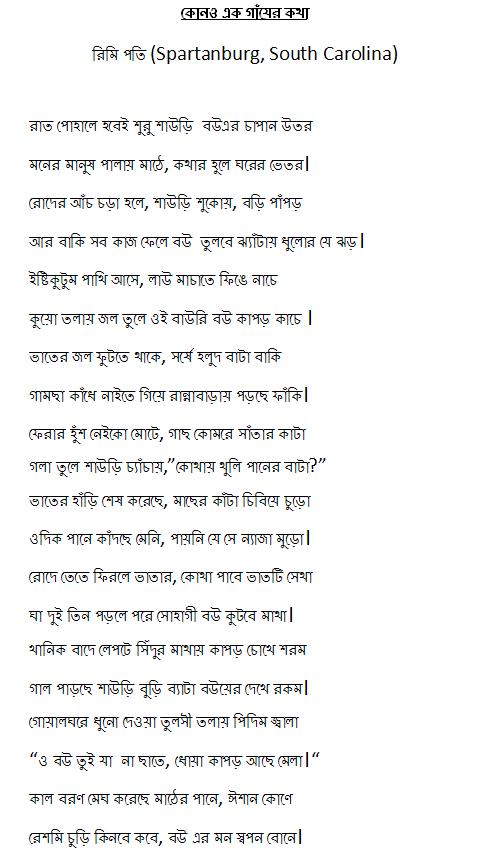 |
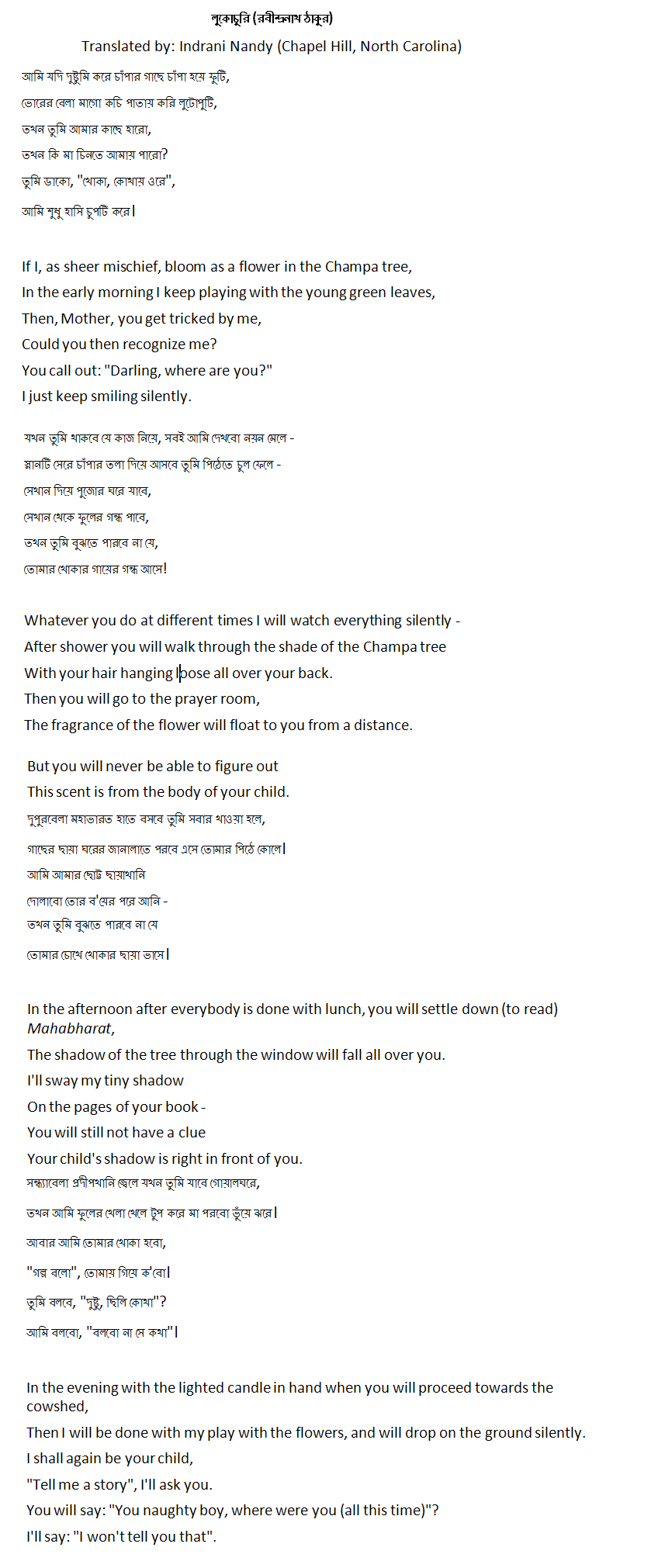 |
My Morning inside Lake Murray
Palash Das |
It’s September and it’s a Sunday
Leaves are yellow
Air is singing, Autumn is here.
Ready for a boat ride
on a cool morning on warm water
Everything looks lazy
Even trees look drowsy
Calm water waking up from a nice sleep.
The boat moves in search of divinity -
As the boat moves forward,
the cool breeze moves the time backwards;
Mind is on the open Willy jeep through Similipal.
The wind takes me to my parents
I smell my Dad sitting on the deck
Mom's shout to slow down
Feel like sixteen taking the fiat out on a drive.
Time to stop the boat, jump into water
Feel like a baby swimming with my babies;
Wondering if they would miss me ever.
Now it’s about lunch time,
time to get back to life
leaving the dreams behind
in the depth of Lake Murray.
|
Friendship
Pritish Das (9 years) |
Once you see the world
you think it is gray.
Bullies come and go,
you are sad and lonely
but if a friend comes up to you instead
feel positive than gloomy.
Your soul gets lifted up and you
feel like you are in the heavens
somebody cares about your life.
So, if you feel sad ignore enemies,
avoid negative thoughts and
think about your friends,God
and your family.
Even making friends
make you feel good
you can lift up your friend’s soul.
The best part about doing
that is making more friends
and eventually you won't get bullied
because the whole world is your friend
love is a very strong word
it might be short but it is very effective.
That is every God's dream
to make thy self like other people,
you might have some arguments,
unfairness,bad choices,
and having a horrible day
you might think the earth is gray and gloomy,
but always think of God
It doesn't matter who your friend is,
it just matters if you show respect,
even to things not alive or animals. |
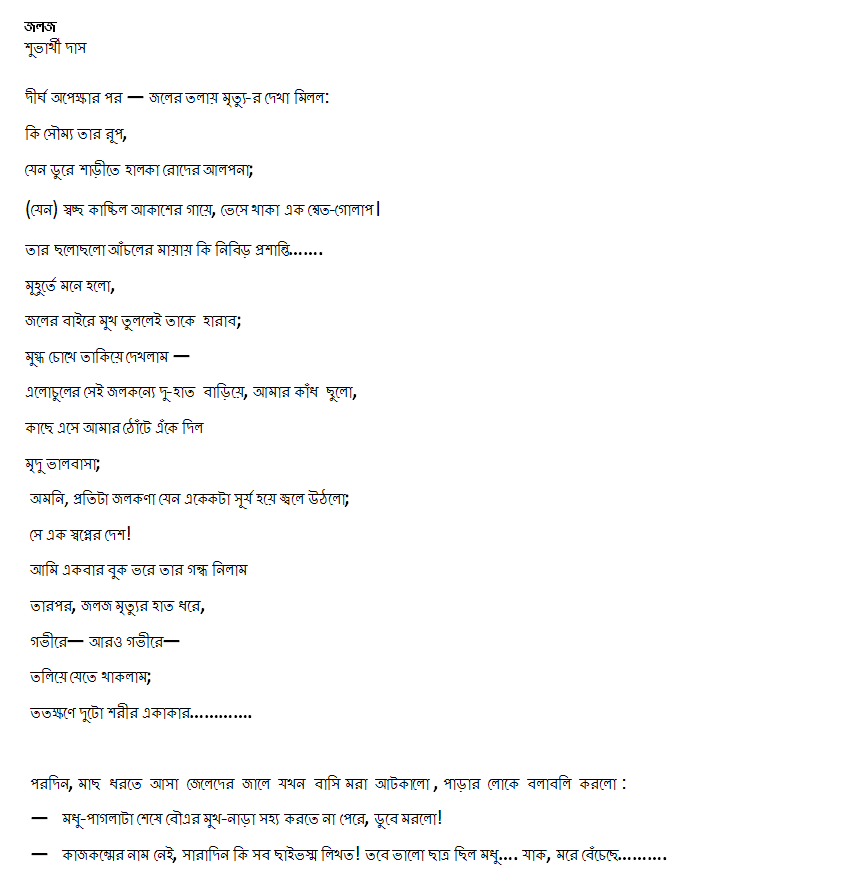 |
| |
Making Naru for Durga Puja – The Tradition Continues
Archana Guha-Mandal |
cousins and I sat on the floor around a large brass plate with sticky mixture of sweetened coconut. We took small quantity of mixture in our palm and roll it to make a small ball. As we started to make naru, we would struggle to make a perfect round shape, but we would strive to make most number of naru(s), and would compete to win “who can make twenty-five naru(s) in five-minutes” contest. After some time Hasididi would join us, and while we cousins made the naru, she would tell us stories from Aesop’s fables or Thakumar Jhuli. As time passed, listening to her stories, we used to forget about our little competitions. We would stop counting, and all naru(s) – perfect shaped or not – would end up in one big pile.
Those days we made about a thousand naru(s). Those homemade sweets were offered to family members, friends and guests at each festivity during Durga puja – at abahan after we received new Durga idol from Kumor-bari on Panchami, at bodhan on Sashthi, at puja as prasad on Saptami, Astami and Navami, and finally at bisarjan on Dashami. The naru was not just another |
sweet offering, but a symbol of our love for family, tradition and solidarity.
In 1989, when I followed Krishna, my husband, to Paris, France – I thought making naru with Hasididi would be another tradition I would have to give up in the foreign country. So when someone was needed to make naru for Durga puja in Paris, I jumped in joy and volunteered. Yet when time came to make naru, I was completely lost without my mother or aunts to grate coconuts, without Hasididi to make the sticky coconut mixture with jaggery, or without my cousins to help me shape naru. Years went by and I learned how to make naru with brown sugar, dry coconut powder and ricotta cheese. I moved from Paris to Montreal to Boston and now to Columbia, and these foreign cities became my home where I continued to make naru for Durga Puja. Now my family is not with me, but my friends are. So a new tradition has started for me – making naru with friends.
Today I am going to share my secret naru recipe with you. Make them, eat them and share them with your friends, and most importantly make memories. |
One of my fondest and earliest childhood memories is making naru with my great-aunt, Hasididi. At our house in Kolkata, the celebration for Durga puja set in motion with preparing narkoler naru on Prathama – the first day after Mahalaya. I still remember Ma, Baropisima, Chotopisima, Dida, Mejomasi, Baromami, Lalbou and Barda sitting in a row with narkol kuruni (coconut graters) at hand and dozens of coconuts in front of them. It seemed such a daunting task to grate that large number of coconuts, but at my amazement it took only couple of hours for 8 pairs of expert hands to finish the job. At other corner of the room, Hasididi and Jethimani brought jaggery to boil in a big Hari made of brass with copper coating outside. The grated coconut was cooked in jaggery until the sweet aroma filled the room. We, the kids, waited impatiently, our palms all buttered up to make naru.
Eventually the time would come when my |
|
|
| Archana’s Narkoler Naru Recipe |
Ingredients:
Coconut powder, dry – 800 gm
Butter, unsalted – two and half sticks
Ricotta cheese - 1 large tub
Condensed milk - 1 can
Brown Sugar – 2 lb
Cardamom powder - 2 tsp (optional)
Method:
1. In a small glass bowl melt 2 sticks of butter in Micro-oven (30 sec on high).
2. In a large bowl pour the melted butter. Add all the ingredients except cardamom powder.
3. Mix the ingredients well to make smooth soft dough.
4. Cook the above mixture in a large skillet (preferably non-stick) on slow heat till the mixture becomes sticky. |
This will take approximately an hour. You need to stir the mixture frequently (if not constantly).
5. The mixture will become softer at first, and then gradually it will become sticky. Longer time on heat makes the naru harder. So adjust the degree of hardness as per your choice by varying the length of cooking time.
6. When the coconut mixture is ready, remove from heat and mix in cardamom powder.
7. Let it cool for 10 min. In the mean time melt the remaining ½ stick of butter.
8. Rub some melted butter on your palms. Take about a tablespoon coconut mixture and make small round balls. |
Yield: 100 – 125 narus (I usually make naru for crowd. To make smaller quantity, you can adjust the recipe proportionally; skip condensed milk and compensate it with ricotta cheese.)
Storage: Store in the refrigerator for up to 7 days. You could store the naru in the freezer; just thaw them for about an hour before serving.
Calorie content: This is indulgence, so stop counting calories.
Variation: You can also make coconut Sandesh, for which you will need sanch – pattern cut-out on wood or stone. Make naru with the sticky coconut mixture. The size of the naru will depend on the size of the sanch. The bigger the sanch the larger the naru is. Evenly press naru on the sanch. Then slowly pull the sandesh off from one corner of the sanch. Periodically you will need to clean the sanch with cold water – so that sandesh peel off the sanch easily. |
|
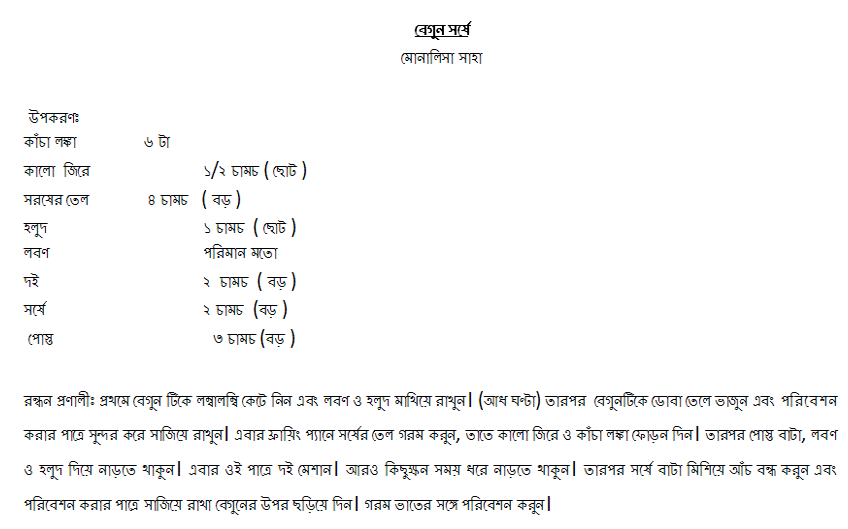 |
| |
Recipe for Jalapeno Cumin Bread
Monika Gupta |
Method:
Use some extra olive oil to liberally grease a deep mixing bowl.
In another big mixing bowl, mix flour, yeast, sugar, cumin seeds properly by hand or electric mixer Make a well in the center and add olive oil, salt, Jalapeno. Mix thoroughly by hand or mixer. Add Water gradually while mixing the flour mixture by hand. Mix evenly by hand. The dough will be sticky. Use a plastic thin spatula to round off the dough and drop it in the deep mixing bowl gently. Gently lift the ball of dough and flip it back in the bowl thereby coating the ball of dough all around. Loosely cover it with a light cloth and keep to rise in a warm place for at least 1½ -2 hours.
Gently punch the dough with a closed fist in the centre and let it rise again and in the |
meanwhile, Pre-heat Oven to 350 deg F if using dark pans at lower racks. Grease three 9 inch Bread Loaf Pans (Non-stick) lined with parchment paper at the bottom. Sprinkle some white flour on the base of the pans and then brush it off. Pull out the dough gently on a floured working surface. Roll it gently using both hands in a circular motion and make a long oval. Use a sharp Chef's knife to cut the dough ball in three even pieces. Knead each ball gently with both hands using extra white flour if needed. Gently lift each ball and form an oval and drop in the loaf pans. Lightly Brush the top surface of the dough with Olive oil and place it in the lower rack. Allow bake up to 25-30 min. Keep it on the cooling rack to cool completely before slicing it. |
This will make 3 loaves of bread.
Ingredients:
2 packets of Rapid Rise Highly Active Fleischmann's Active Dry Yeast
7 Cups of King Arthur's Organic All purpose Flour
2.5 cups of Warm Water 120ºF
3 tsp Brown Sugar
3 tsp Salt
2 cups of Finely Chopped Fresh Jalapeno
3 tsp Cumin Seeds
3 Tbsp Pompeian Extra Virgin Olive Oil Cold pressed |
|
| |
Recipe for Misti Doi
Treena S. Basu |
Process:
In a sauce pan pour in half gallon of whole milk and place over low heat on stove. The goal is to reduce the volume of the milk to half of the original amount. This process will take about two hours. During this time remember to stir the milk occasionally otherwise the milk at the bottom of the pan will burn. After about two hours add 8 tablespoons of sugar. This will make the yogurt moderately sweet. You can control the sweetness level according to your needs or taste. After adding the sugar, continue to boil the milk for another 20 mins. Let the milk cool down to approximately room temperature. |
In another bowl add two tablespoons of plain yogurt. Whip this yogurt with a fork. Next add the can of evaporated milk and continue to whip this mixture. Add the reduced milk into the bowl and mix all the ingredients together thoroughly. Cover the bowl with a plate and place the bowl in a place of minimal disturbance. After about 5-6 hours you should be able to see the milk has partially solidified into yogurt-like texture. Once this has happened, place the bowl in the refrigerator overnight. Next day it’s ready to serve. Garnish with some pistachio and cashew nuts and ENJOY! |
Serves: 6-8 people
Preparation time: 1 day
Ingredients:
1 gallon whole milk
1 can of evaporated milk
1 container of plain yogurt (preferably desi yogurt)
8 table spoon of plain white sugar
Some pistachio and cashew nut for garnishing |
|
|
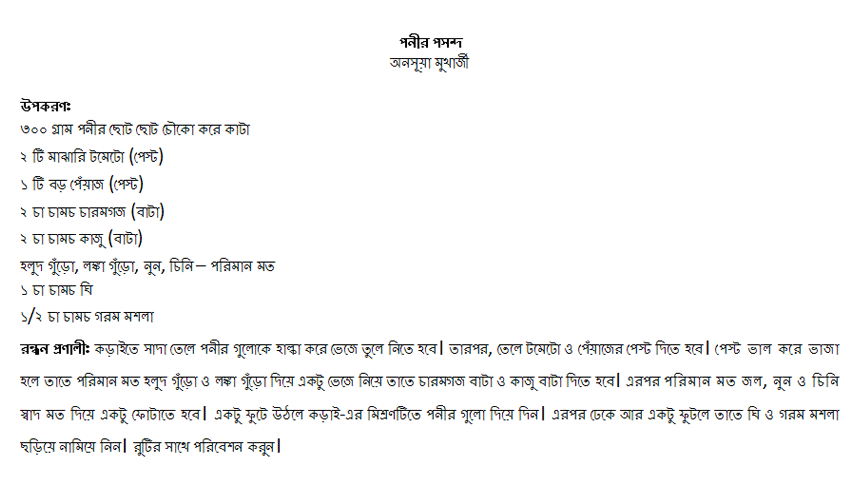 |
Quiz Corner
Julia Majumdar Bose and Sandip Das |
1. Which university did Bill Gates drop out before establishing Microsoft?
2. Which is the biggest passenger plane in commercial service today?
3. What does BPL & LG stands for?
4. Who was the first American to make $100mi a year?
5. Which imaginary creature is depicted as white horse with one spiralled horn growing from its forehead?
6. By what name is the large American bird Meleagris Gallopavo more commonly known?
7. In India, who is the first person to be enumerated in the census?
8. According to the Guinness World Records, which company is the world’s largest manufacturer of bicycles?
9. Which creatures are studied by an ornithologist?
10. What was the former name of JFK airport, New York?
11. What language do the people of Brazil speak?
12. If you are celebrating your diamond anniversary, how many years have you been married?
13. What is the world’s largest bird
14. What is the largest man made structure on Earth?
15. What animal is the symbol of the World Wildlife Fund?
16. How many zeros are there in a trillion?
17. What do the letters BBC stand for?
18. What was the name of the cloned sheep which attracted much media attention in 1997?
19. Where is WTO headquartered?
20. What do the initials NATO stand for?
21. Mossad is the secret service of which country?
22. Which country is the world’s largest producer of cheese?
|
 |
 |
| 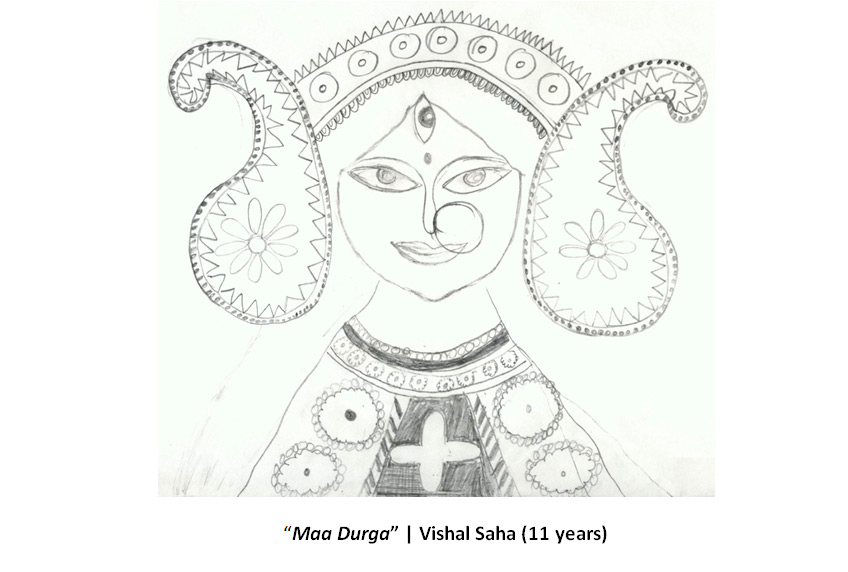 |
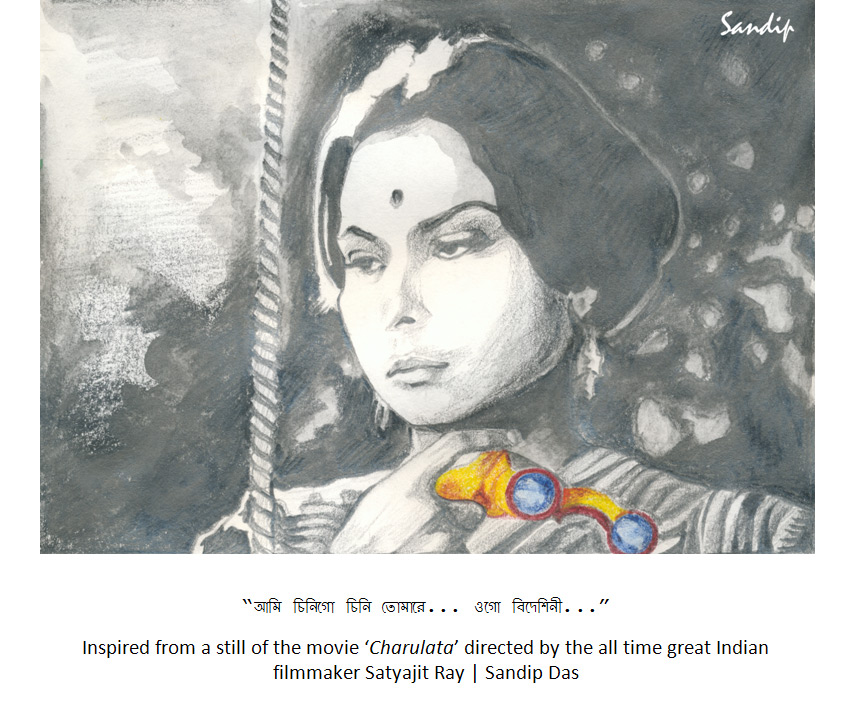 |
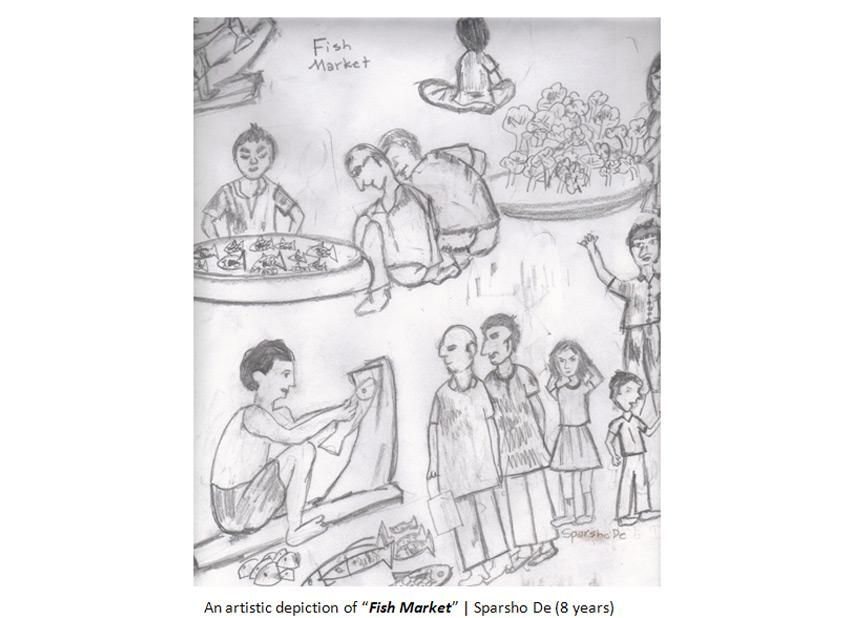 |
| 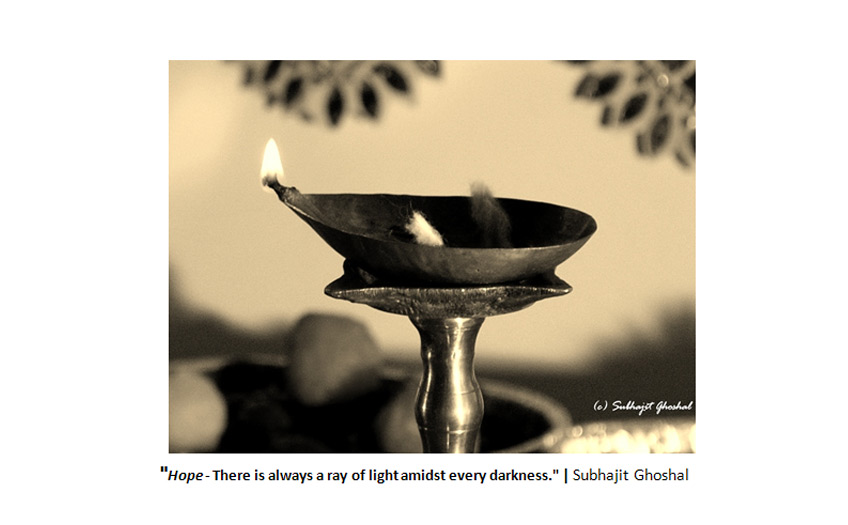 |
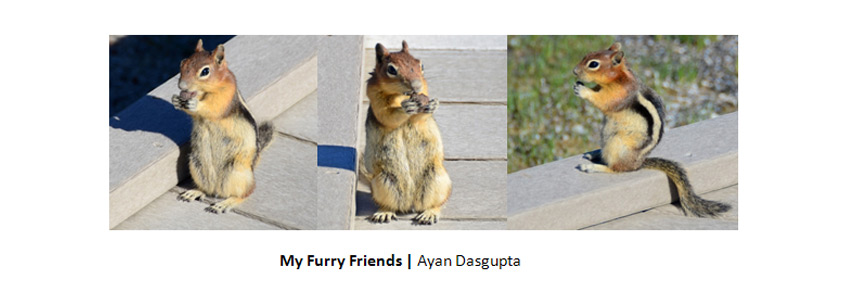 |
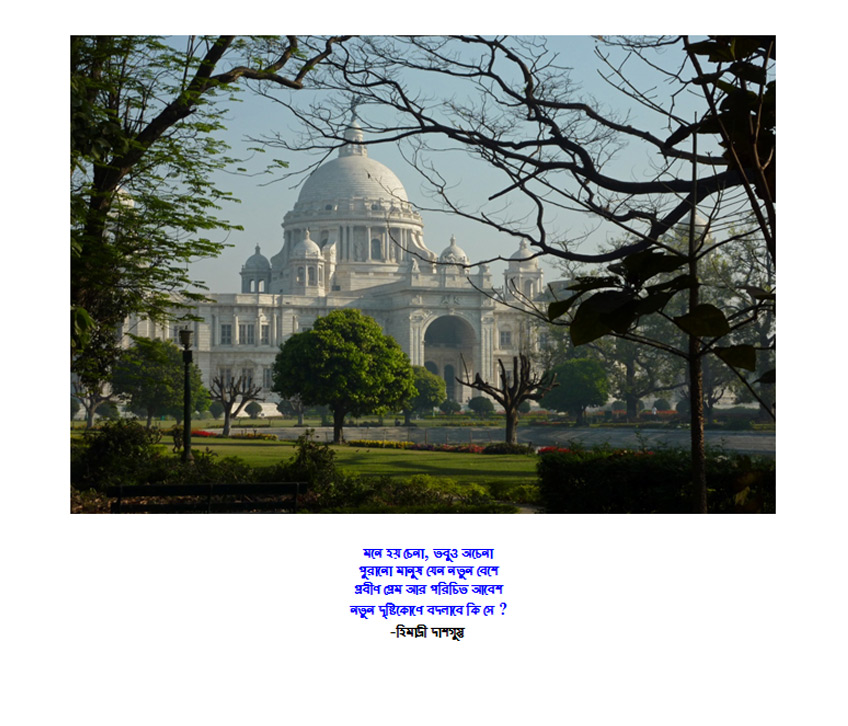 |
|